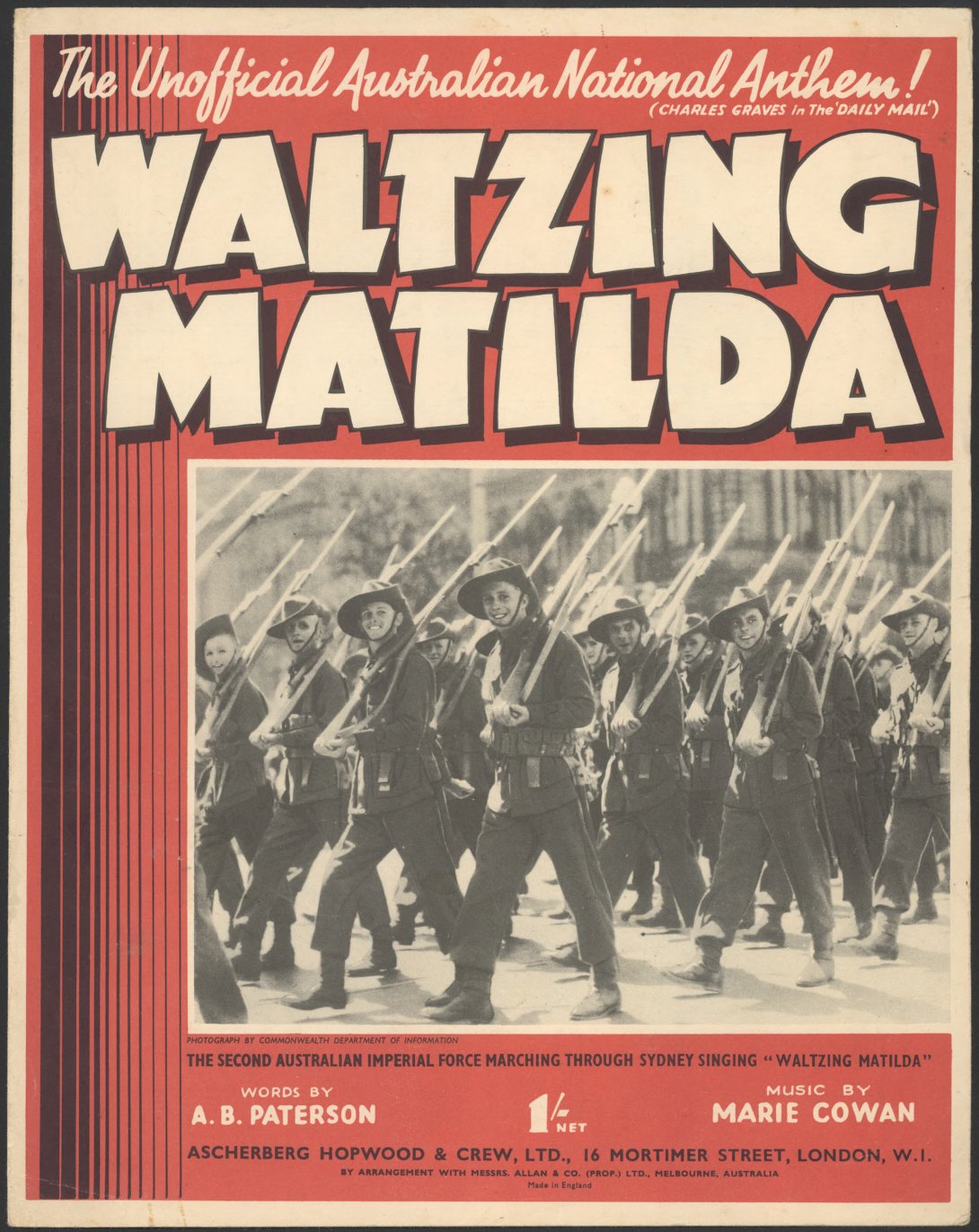Due to scheduled maintenance, the National Library’s online services will be unavailable between 8pm on Saturday 7 December and 11am on Sunday 8 December (AEDT). Find out more.

Whether you know him best as a bush poet, lawyer or journalist, Banjo Paterson is a commanding figure in Australian history. His poetry is woven into the fabric of Australian culture, with bush ballads like The Man from Snowy River and Australia’s unofficial national anthem Waltzing Matilda forming part of a uniquely Australian mythology. The Library is fortunate enough to hold some of the papers of Banjo Paterson, a collection of handwritten diaries, notebooks and correspondence that reveal the personal life of the man behind the name. These papers were the focus of a large-scale digitisation project that made them accessible to the Australian public.
To celebrate the anniversary of Banjo Paterson’s birth, 158 years ago on February 17, 1864, we’ve searched the archives to bring you a guide to the Library’s material. In this blog, we explore manuscripts of children’s poetry, personal letters written to Paterson's family, and the story of the discovery of a 120-year-old chocolate box. Read on to discover more about the life and achievements of Australia's best-known bush poet.
Preserving the new collection
After four generations with the Paterson family, the Library acquired the papers of Banjo Paterson in 2019. This acquisition contained the last remaining material relating to Paterson that was not already held in a public institution. In 2020, following a public donation appeal, the collection was digitised and made available online.
Some of the material required extensive conservation care so these items were sent to the lab for careful restoration.

Read more about the journey from acquisition to display at the National Library and find out how one photograph was lovingly restored to its original glory.
Banjo Paterson, the children's poet
Though we may not immediately associate Banjo Paterson with children’s poetry, he did produce quite a few. Some were believed to have been written for his grandchildren.
One collection, The Animals Noah Forgot, contains a series of playful verses that explore the idiosyncrasies of Australia’s unique wildlife. In the Library’s collections, you’ll find drafts and fragments of the verses that made it into the published volume, handwritten notes and amendments, and two first editions of the 1933 publication – one copy is inscribed with the message ‘To my dear wife with much love and admiration for her unfailing pluck and cheerfulness.’

Find out more about The Animals Noah Forgot and Paterson’s writing for children in this video with one of our manuscripts experts.
The poet and the lawyer
Before rising to prominence as a writer, Banjo Paterson practiced law as a solicitor in Sydney. It was during these years of legal practice that Paterson began submitting poetry for publication in The Bulletin, a well-regarded literary journal.

Paterson’s flair for the written word is obvious in the legal documents contained within his papers, where his legal work is interspersed with snippets of verse. These early drafts would later form the basis of publications that are widely known today.
Dive into Paterson’s legal notes with our manuscripts expert.
The family man
Amongst the drafts, manuscripts and diaries acquired with the papers of Banjo Paterson are a series of letters and photographs that provide a rare insight into the family life shared by Paterson, his wife and his children. These intimate letters reveal the daily life of the family, often separated due to the nature of Paterson’s work and his various postings as a war correspondent.

One letter, written by Paterson to his daughter Grace, expresses enthusiasm at his daughter’s interest in writing. Explore some highlights from the Paterson’s personal correspondence in our video.
The 120-year-old chocolate box
Whilst processing the acquired papers of Banjo Paterson, Library staff made an unusual discovery amongst the photographs and manuscripts. An unopened and well-preserved box of chocolates was found still in its straw packing and silver foil wrapping.

The tin was commissioned by Queen Victoria and sent to South Africa as a gift to troops serving on the front during the Boer War. Paterson, who served as a war correspondent for the Sydney Morning Herald and The Age, is thought to have bought it from a soldier.
Explore this piece of military history in our news item on the discovery.
Explore the digitised collection
Can’t get enough of the papers of Banjo Paterson? Use our handy finding aid to guide your journey through the collection. In the guide, you’ll find itemised lists and descriptions of each item contained within the acquisition. Amongst these items are an original pencil sketch of Paterson as war correspondent during the First World War by artist G.W Lambert, a letter to Paterson written by poet Henry Lawson from prison, and a dinner menu signed by Neville Chamberlain and Rudyard Kipling.

The treasures contained within this collection are digitised and available for viewing online today. Dive in and see what you can find.
Learn more about Australian poetry
The Library holds an extensive range of Australian poetry in its collections. If you are interested in learning more about the history of Australian poetry, and bush poetry in particular, our Australian literature research guide contains tips and tricks for searching the catalogue.

Here you’ll find a guide to online databases and websites that contain information about Australian poetry, as well as useful links for further reading.